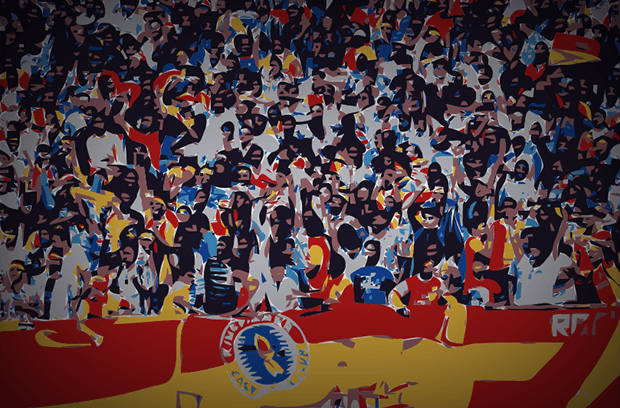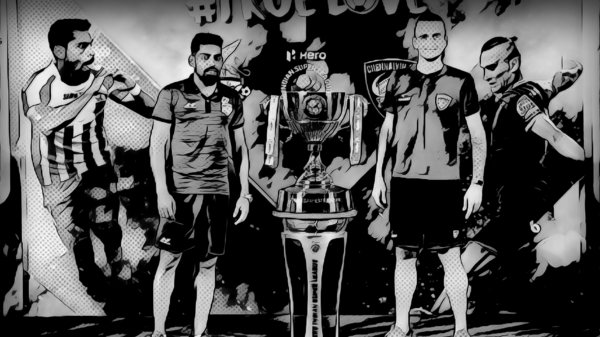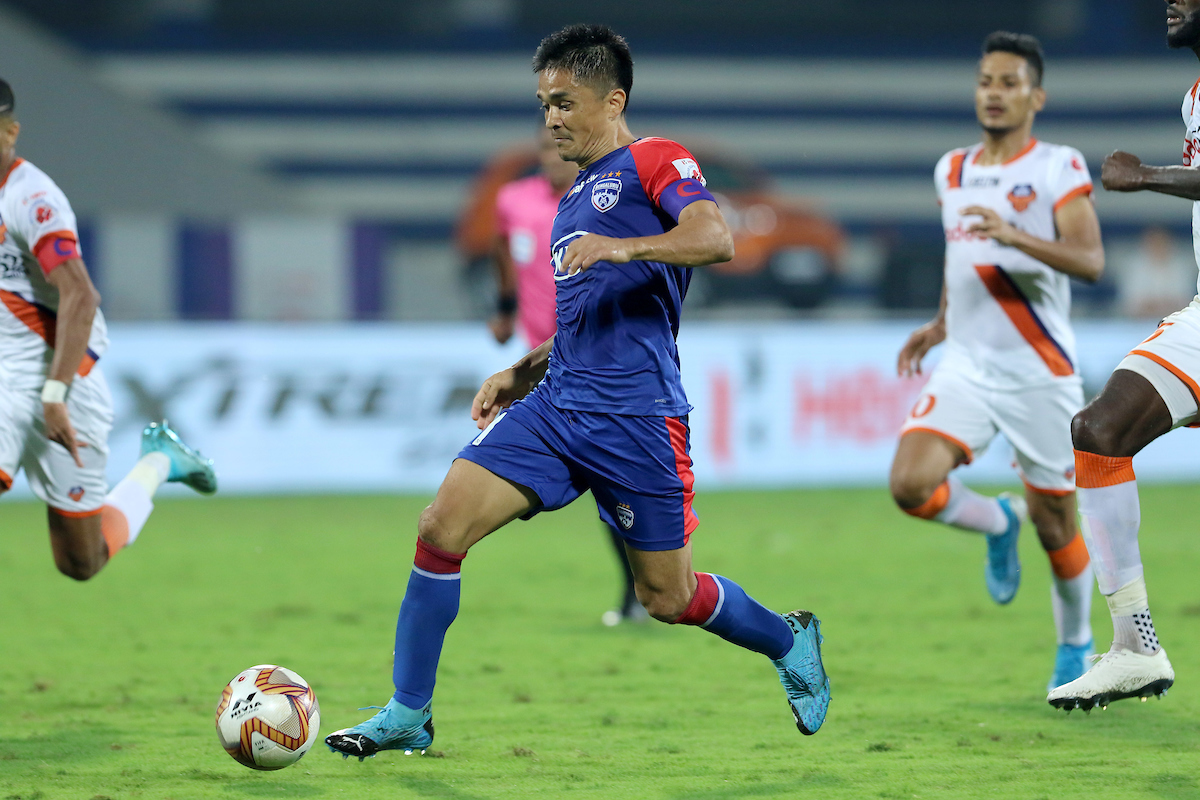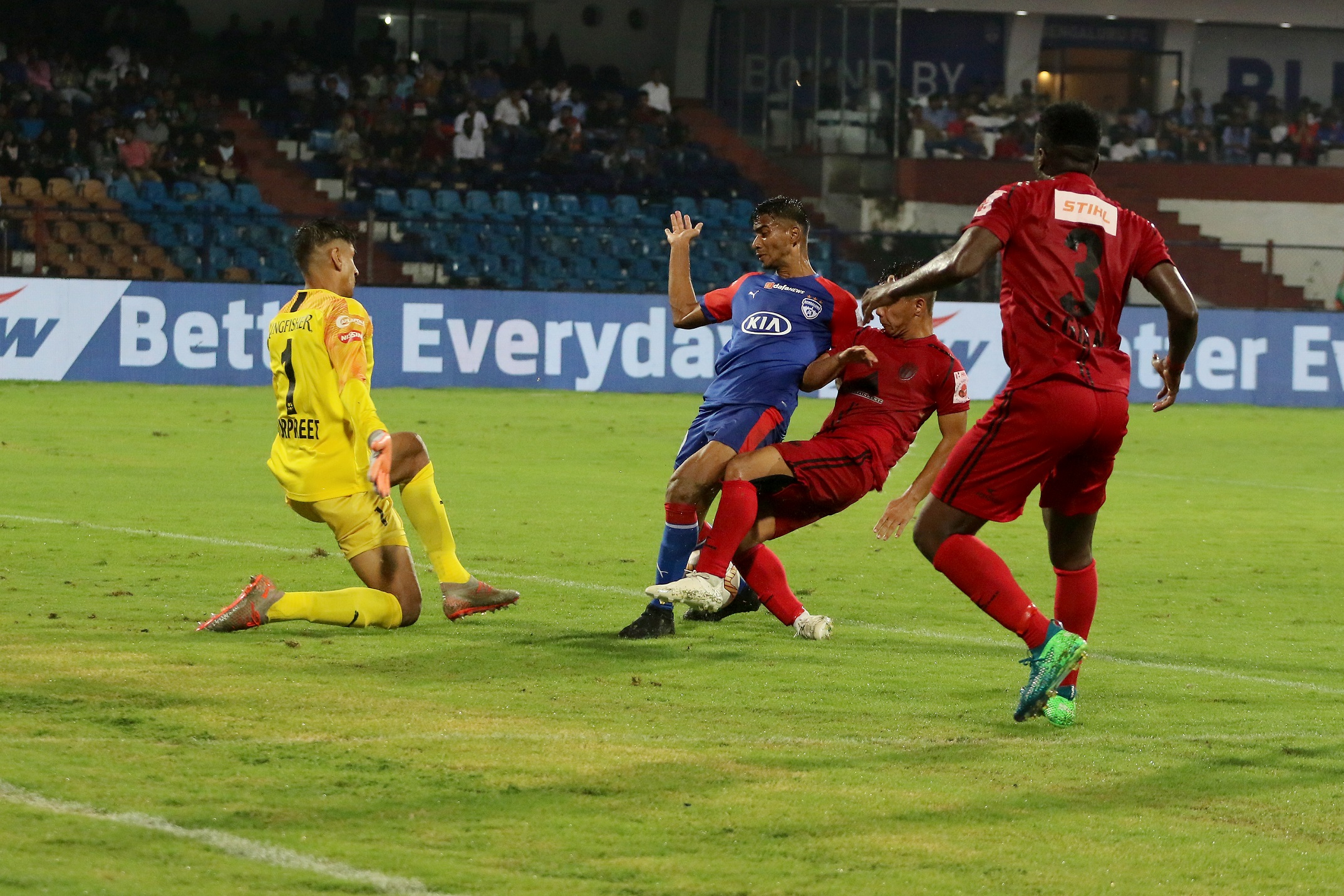The Indian Super League has garnered a lot of attention, generated hype and created an air of excitement. In this three part series Sami Faizullah lists down the Positives it brings to Indian Football, while also highlighting it’s Absurdity and raising questions about the Future.
The previous part of this three part series dealt with the positives currently in Indian football with the establishment of the Indian Super League. But the flavor turns a bit pessimistic now, focusing on how absurd the situation is among the glitz & glamour. It may not be a popular opinion, but one does have to offer a different perspective, past the hype, excitement & Del Piero.

Lack of awareness and a case of two conflicting leagues
“Finally India has its own football league” was a comment I came across a while back on Twitter, and have since seen variations of that across social media platforms. Many football followers in parts of the World have only now taken note of the existence of Indian football; completely understandable. But there are individuals within the country who are astoundingly oblivious to the existence of the I-League.
Now neither the National Football League (predecessor to the current top division league of India) nor the I-League truly met its objectives, and though there have been improvements as the years have gone by, it has largely stagnated or failed to truly improve the state of the sport. But the lack of awareness of even its existence, let alone knowledge about it, is an utter embarrassment.
One can’t completely attach blame to the general population; interest needs to be ignited and supporters need to be attracted. These are issues that have plagued even established European leagues. Fingers have to be pointed at the organizers and the governing body. Plans have been made, but rarely carried out; any improvement in the sport over the years has hardly been due to the All-India Football Federation (AIFF), but due to the exclusive work of the clubs themselves.
A solution was required – investment, popularity, quality coaches & players, professionalism, they were all needed to truly influence the development of the sport. The idea was right, the execution is what many question.
All those basic factors mentioned above are what the likes of the J-League in Japan, and the Major League Soccer in USA identified years ago, followed it up with proper execution and are now reaping the benefits (both were created in 1993). The J-League is considered the best football league in Asia (on par with Australia’s A-League which is a new entrant to the Asian continent in footballing terms) along with their national team, and the same is said about USA’s top division ‘soccer’ league.
But here’s the thing, both the JFA and USSF established these two leagues, making them the top tier of the football structure in the country. A plan was made to improve the state of the sport, develop conditions, encourage the youth, get proper coaches in place and ensure, above all, the sustainability of it across a long-term base.
The situation in India is however a stark contrast. We have a regular domestic league system in the form of the I-League. This has needed investment, marketing, coaches, players, conditions, popularity, awareness…the list goes on. AIFF, along with IMG Reliance, made a plan of providing these factors to the sport. Not to the existing I-League, but rather by virtue of a completely new tournament that runs for a brief period of two-three months.
The question Indian football enthusiasts are asking is quite simple; why wasn’t this done for the existing league and the existing clubs? Why has investment been sought for completely new franchises when the existing clubs have been screaming for it? Why haven’t the traditional powerhouses like Mohun Bagan (founded way back in 1889, older than some of the big European clubs) and East Bengal (founded in 1920) been given the option of having Zico, Peter Reid & Ricki Herbert as their coach? Why aren’t Sachin Tendulkar, John Abraham and all the other familiar faces who suddenly see a football market to venture into, being encouraged to invest in the existing clubs? Why haven’t any of these factors been provided to the existing I-League clubs, who for decades have been striving to promote the sport in the country?
The organizers, the public, the media have all turned a blind-eye to these existing clubs, and instead seen a couple of franchises as the supposed answer to all of India’s footballing problems.
Commitment & Sustainability of the Indian Super League
Daniel Storey got it spot on in his piece for Football365 in which he questioned the sustainability of this ambitious project. Carrying on from there, and putting aside the fact that the governing body thought it to be a good idea to start a completely new tournament rather than improving the existing one with the same factors, one has to question why this tournament that supposedly marks the “birth of a football nation” is running for just 10 weeks? Surely you have to see the problem there. How does such a short-term tournament solve anything, besides raise popularity for an extremely short period of time?
One reason is of course it didn’t want to clash with the I-League (which again raises the question of why conduct two separate tournaments). But the schedule of the I-League has already been dealt a major blow, where it now has a pre-season of over 7 months. In any circumstance, having little to no competitive football for such a long period of time affects the development of any team; the players meant to represent their nation and clubs who will represent India in Asian club competitions will undoubtedly suffer.
But the larger worry here is the commitment shown by those running the sport, and the owners of the ISL franchises. The fact that the Indian Super League will only be played for 10 weeks suggests that no one was willing to make an investment involving a longer commitment, which again questions the sustainability. The ISL will only have a subsequent edition if the inaugural one succeeds.
What counts as success? For the owners, it would be a return on investment. Failure to achieve that, would possibly turn them away from future investment and of course also prevent the commitment of the foreign players & coaches in Indian football, beyond their short contracts. A return on investment depends largely on the success of each franchise, which inadvertently depends on supporters showing a sustained interest and regularly filling up stadiums. Success will definitely peak during the initial stages across all 8 franchises. But what happens when after 7-8 games, arguably a couple of those teams are mathematically unlikely to qualify for the play-offs? With no real loyalty to a franchise, do supporters still show up? Do owners get their return on investment? Reports have shown how even a large club like Manchester United can have a drop in attendance figures when the team hits a poor patch of form. A poor patch of form in the ISL is far worse than one in a 10 month long league campaign.
Now you can argue that these millionaire owners aren’t really looking for a return on investment. But how many of them are truly committed to the upliftment of football in the country in the long run? Does 27-year-old Bollywood actor Varun Dhawan (co-owner of FC Goa) have a vision for Indian football? Is that vision shared by Indian cricket team captain, MS Dhoni (co-owner of Chennaiyin FC)? Are any of them willing to make a commitment and/or investment beyond the spectacular Indian Super League? Will they commit to a decade long project (which is what Indian football actually requires)?
The worrying bit is, if the ISL does indeed fail in achieving whatever objectives it was set out to, and as a result a second edition doesn’t take place, acquiring more investment for the sport will prove to be that much harder (let alone getting foreign investment).
Wrong investment & anti-domestic
The problem is that all this investment has been made keeping in mind a glamorous 10 weeks, made to lure the big name marquee players and foreign talent which has naturally attracted more viewers to the sport.
Yes, popularity was key and the Indian Super League is achieving that, but what does that solve? The same amount of funds that have been used to attract those big European stars would have been better invested in the existing league, solving the existing problems and crucially could have been used for a long-term development strategy right from grassroots level. We are yet to see any real commitment to grassroots development, and with the ISL teams playing for a short period, one would again have to question would any of them put in a sustained effort beyond the duration of the extravagant tournament?
Attracting big name players in the latter stages of their careers is a philosophy widely used by teams in the Middle East. The likes of the Saudi Pro League, Qatar Stars League and UAE Arabian Gulf League have all attracted big superstars in the recent past, with almost no improvement in the general football especially at the national team level. In the case of Saudi Arabia, the national team has in fact deteriorated to the point where they are currently as low as 82nd in the FIFA rankings, a drop of over 60 places from a high of 21, just 10 years back. Neither have have they produced players considered capable enough of plying their trade abroad. In fact, in the 2014 FIFA Word Cup qualifiers, all these nations disappointed with the less spectacular countries of Jordan & Oman doing far better.
And this leads to another issue regarding domestic player development. The general public have been blinded by the glamour associated with having big name stars playing in India, but what purpose do they serve besides raising popularity (the fact that raising popularity is so high on everyone’s list of Indian football issues is another concern). Sure, them training week in and week out with Indian players improves the ability & experience of these domestic players. But while the Asian Football Confederation (AFC) has prescribed a 3+1 rule whereby each side is allowed to have only 4 foreign players (of which 1 has to be an Asian), the Indian Super League isn’t restricted by these rules. The AFC has implemented the 3+1 rule to ensure Asian footballers get maximum development, thus improving the national teams which are comparatively the weakest (Iran is the highest ranked Asian team and they are 44 in the World ranking at the time of writing). Teams have followed the 3+1 rule for Asian competitions, while some have given further freedom for the domestic leagues by allowing a total of 5 foreign nationals.
The Indian Super League however, has allowed franchises to name as many as 14 foreign nationals, with the lowest by any team being a staggering 10. Of these, six will reportedly be able to play at any given point in the playing XI. But given that most sides have 12-14 foreign players, one would have to assume each of these would be given a fair amount of playing time above and beyond the domestic players. A 6+5 rule is still reasonable, and yet puts the domestic Indian players in a minority. A minority not seen elsewhere in Asian football. Now a country like India, looking to improve it’s national team but allowing more foreign players than domestic ones certainly is a worry. These aren’t just Indian youngsters looking for playing time; players 24-26 and beyond will also likely have restricted opportunities in the peak of their careers. The Indian Super League almost has as many foreign players, as it has domestic. This issue has even affected an established footballing nation like England, imagine what it does to an under-developed one!
To further expand on this, the Indian Super League will even feature American referees from the Professional Referee Organisation (PRO). This would be unthinkable in most football leagues across the World.
All this goes against anything domestic, against anything meant to develop domestic football, it’s an exhibition of foreign stars, an opportunity for the Indian population to see stars who they have thus far adored only on television sets, in full life & blood. And who knows, a situation may arise where the ‘Indian’ Super League is ultimately held abroad, mirroring what the IPL (cricket) did a few years back.
It’s great that the general Indian population is finally talking about football, but to think the ISL solves major football issues is extremely naive. It merely papers over the cracks, using shiny paint made in a foreign country rather than using plaster made back home; the cracks will re-emerge 10 weeks later, possibly in a slightly better state but with the same long-term problems.
← PART ONE | PART THREE →
Written by Sami Faizullah

























































